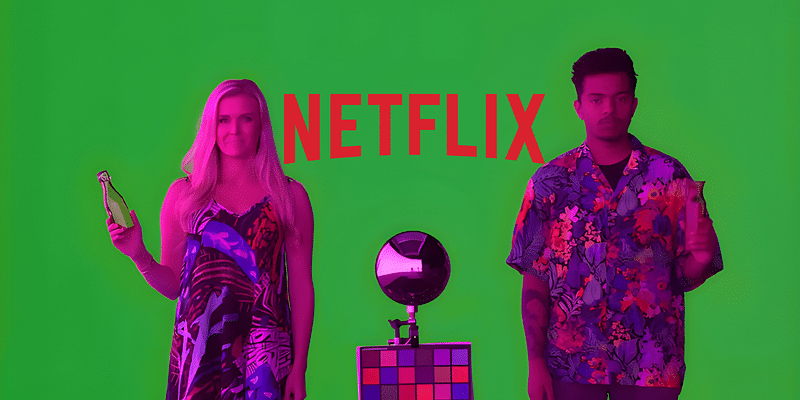
Hollywood’s well-worn green screen may be up for an early retirement, thanks to a bold, color-popping innovation from Netflix. The streaming titan’s research team has been cooking up a visual effects revolution: the Magenta Green Screen (MGS), a technology wielding the power of artificial intelligence (AI) to conjure up movie magic like never before.
Already, Netflix is harnessing AI to curate your show selection, personalising your binge-worthy lineup. Now, they’re extending AI’s wizardry to filmmakers, serving up a tool that promises visual effects that are not just more life-like but also crafted at lightning speed.
The green screen has been the film industry’s magic wand for decades. Actors perform against this lime canvas, which is later digitally traded for fantastical landscapes, bustling cities, or intergalactic showdowns.
But what about the niggling problems when an actor’s costume shares the same color or intricate hairstyles play havoc with the technology? It becomes a painstaking manual task to edit these details convincingly.
Enter MGS, swooping in with AI-powered efficiency. Promising to outperform the conventional green screen, MGS can swiftly handle the fiddly details that usually demand hours of manual editing. With MGS, actors are bathed in an immersive glow from a combination of green, red, and blue lights. This results in a distinctive magenta hue, which effectively segregates the colors, making the background swap-out a breeze.
AI is the magic wand here, erasing the green background in real-time, which means actors can be instantaneously whisked into a new scene. Excitingly, this AI can master intricate details like transparent objects or even individual hair strands, previously a headache with conventional methods.
There’s a plot twist though. The MGS method can leave actors and objects awash in a surreal magenta. But don’t worry, Netflix’s AI is on hand to rectify this, using a normal photo of the actors as a color correction guide, restoring the scene to its full, vibrant color spectrum.
It’s clear that AI is more than a passing trend – it’s a veritable game-changer. Giants like Zoom, Meta, Google, and even the US Department of Defense are turning to AI to supercharge their offerings.
Yet, the MGS technology has its skeptics. Drew Lahat of Geiger Post voices concerns about its practicality in frenetic shoot environments and its potential to outdo other budding techniques. Despite this, Netflix remains resolutely optimistic. Researcher Paul Debevec believes this tech will liberate artists to focus on their craft, to make things “look better.”
Will the artists embrace this new entrant to their toolbox?
The AI-propelled MGS represents a bold leap for Netflix, with the potential to save filmmakers buckets of time. However, actors might need to adjust to their new magenta spotlight!
There are hurdles to overcome, such as synchronising the lighting with the camera, but Netflix’s team is charged with hope. They’re taking on a seasoned filmmaking challenge with a vibrant, high-tech solution. Whether the industry chooses to adopt it or not, it’s clear that the humble green screen may soon face some flashy competition.







![Read more about the article [Funding alert] Ratan Tata invests in Pritish Nandy Communications](https://blog.digitalsevaa.com/wp-content/uploads/2021/03/yourstory-ratan-tata-300x150.png)


